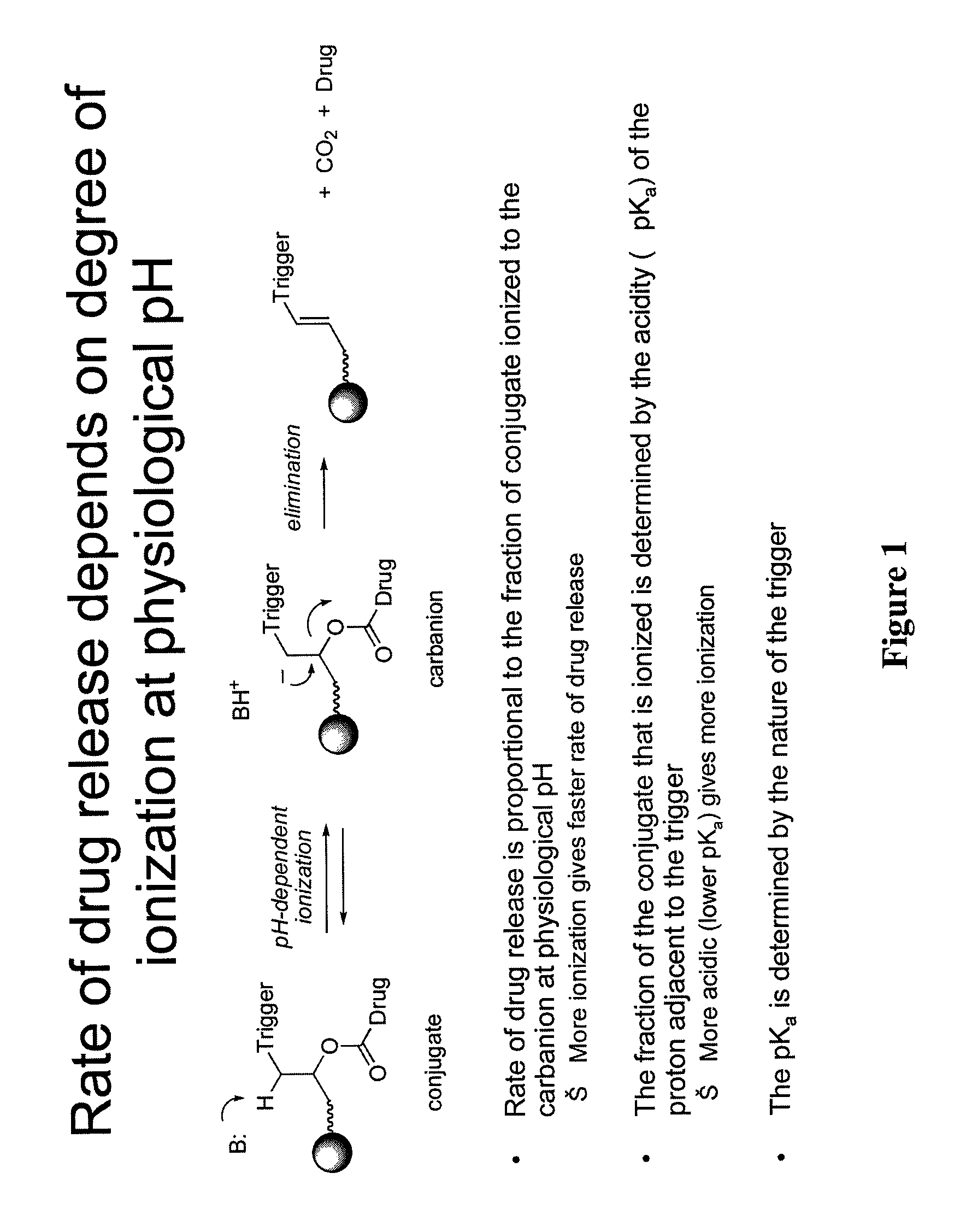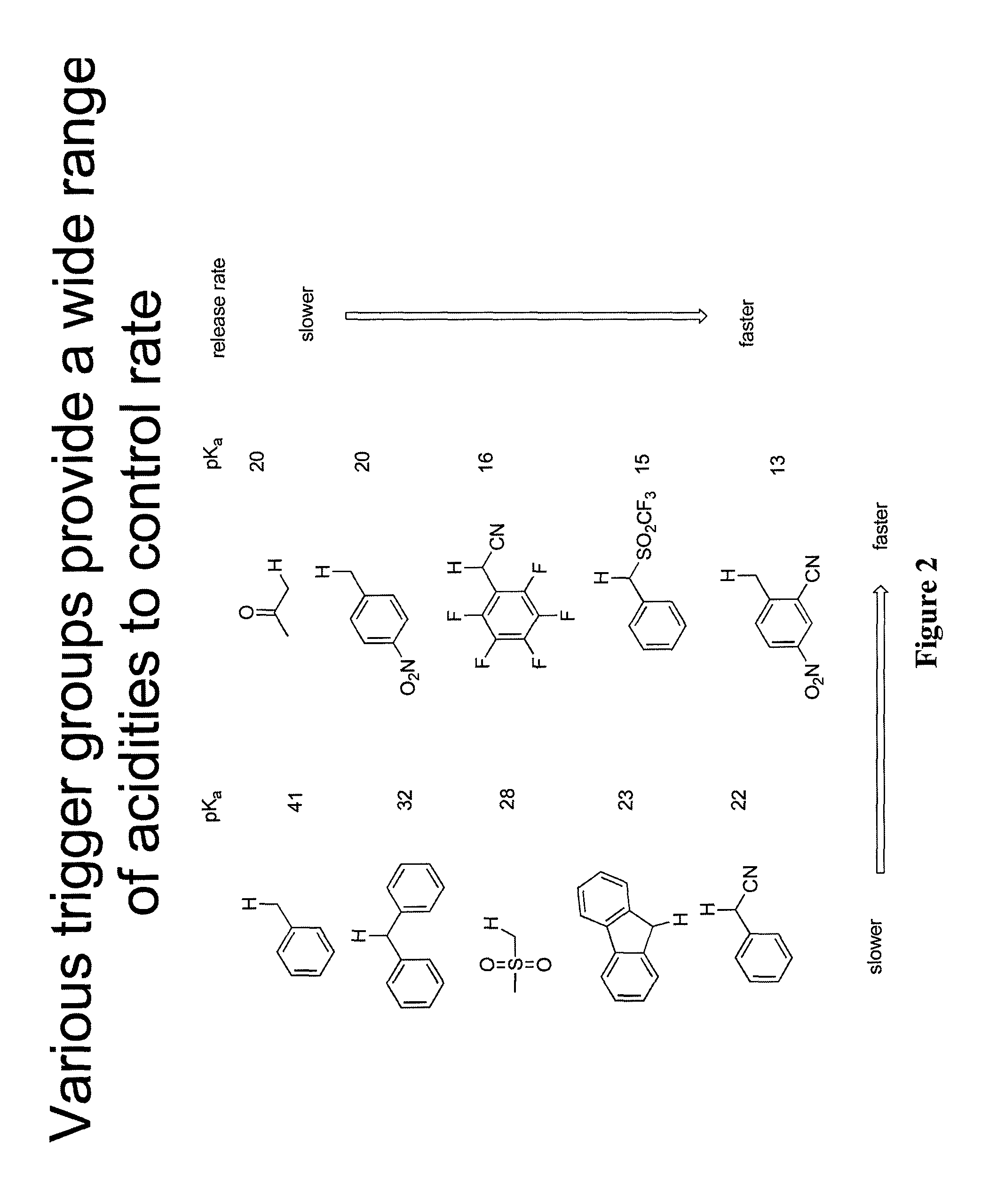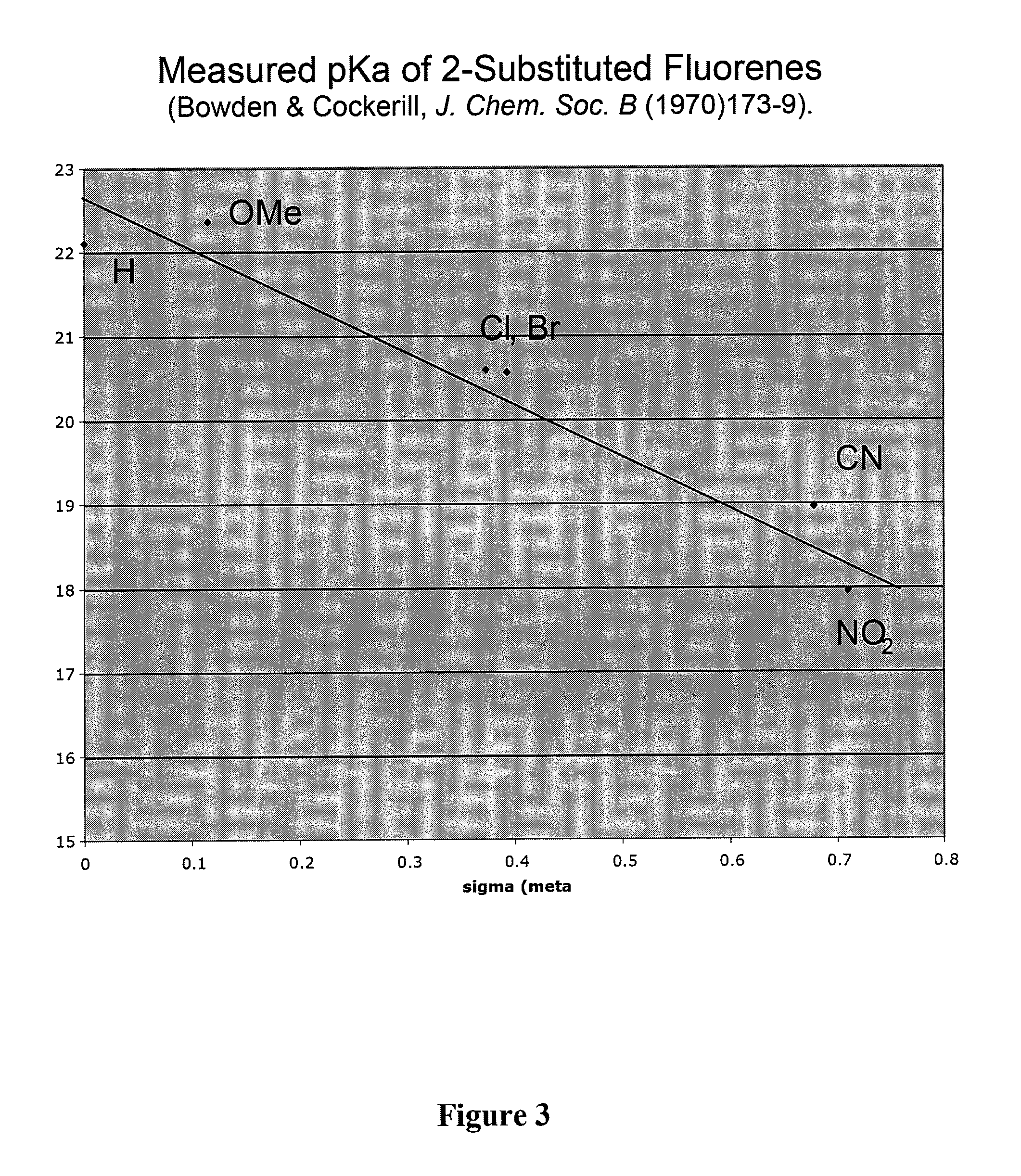Prodrugs and drug-macromolecule conjugates having controlled drug release rates
a technology of macromolecules and conjugates, applied in the field of compounded drugs, can solve the problems of limiting effectiveness, unfavorable pharmacokinetic parameters, and peptide- and protein-based drugs often suffering rapid systemic clearance, and achieve the effect of prolonging the therapeutic effect of the therapeutic agen
- Summary
- Abstract
- Description
- Claims
- Application Information
AI Technical Summary
Benefits of technology
Problems solved by technology
Method used
Image
Examples
example 1
General Procedure, Formula (1), A=Absent, X=O
[0466]A solution of R1R2CH2 (1.0 equivalent) in tetrahydrofuran (THF) is added to a solution of lithium diisopropylamide (LDA) or butyllithium at −78° C. (1.0 equivalent). The mixture is allowed to warm slowly to 0° C., then recooled to −78° C. prior to the addition of aldehyde L-CHO (1.0 equivalent). After 30 minutes, the mixture is allowed to warm slowly to ambient temperature, quenched by addition of saturated aqueous NH4Cl, and extracted with ether. The extract is washed sequentially with 1 N HCl, saturated aqueous NaHCO3, and brine, then dried over MgSO4, filtered, and evaporated. The product is purified if necessary by chromatography on silica gel.
example 2
General Procedure, Formula (1), A=Absent, X=S
[0467]A solution of the compound of formula (1) wherein A is absent and X=O (1.0 equivalent) in THF is added to a solution of 1 M lithium bis(trimethylsilylamide) (LiHMDS) (1.0 equivalent) at −78° C. After 15 minutes, a solution of p-toluenesulfonyl chloride (1.0 equivalent) is added, and the mixture is allowed to warm slowly to ambient temperature, quenched by addition of saturated aqueous NH4Cl, and extracted with ether. The extract is washed sequentially with 1 N HCl, saturated aqueous NaHCO3, and brine, then dried over MgSO4, filtered, and evaporated. The resulting crude tosylate is dissolved in isopropanol and reacted with aqueous sodium thiosulfate at 50° C. to form the Bunte salt, which is hydrolyzed by treatment with aqueous HCl. The mercaptan product is purified by chromatography on silica gel.
example 3
General Procedure, Formula (1), A=Alkenyl (C2), X=O, L=Substituted Aryl
[0468]A solution of R1R2CH2 (1.0 equivalent) in tetrahydrofuran (THF) is added to a solution of lithium diisopropylamide (LDA) or butyllithium at −78° C. (1.0 equivalent). The mixture is allowed to warm slowly to 0° C., then recooled to −78° C. prior to the addition of methyl 3-(dimethylamino)propenoate (1.0 equivalent). The mixture is allowed to warm slowly to ambient temperature, quenched by addition of 1 N HCl, and extracted with ether. The extract is washed sequentially with 1 N HCl, saturated aqueous NaHCO3, and brine, then dried over MgSO4, filtered, and evaporated. The product ester is purified by chromatography on silica gel.
[0469]A solution of the ester (1.0 equivalent) in THF is treated with excess lithium aluminum hydride, then quenched by addition of oxalic acid and extracted with ether. The extract is washed sequentially with 1 N HCl, saturated aqueous NaHCO3, and brine, then dried over MgSO4, filter...
PUM
| Property | Measurement | Unit |
|---|---|---|
| molecular weight | aaaaa | aaaaa |
| molecular weight | aaaaa | aaaaa |
| mw | aaaaa | aaaaa |
Abstract
Description
Claims
Application Information
 Login to View More
Login to View More - R&D
- Intellectual Property
- Life Sciences
- Materials
- Tech Scout
- Unparalleled Data Quality
- Higher Quality Content
- 60% Fewer Hallucinations
Browse by: Latest US Patents, China's latest patents, Technical Efficacy Thesaurus, Application Domain, Technology Topic, Popular Technical Reports.
© 2025 PatSnap. All rights reserved.Legal|Privacy policy|Modern Slavery Act Transparency Statement|Sitemap|About US| Contact US: help@patsnap.com



